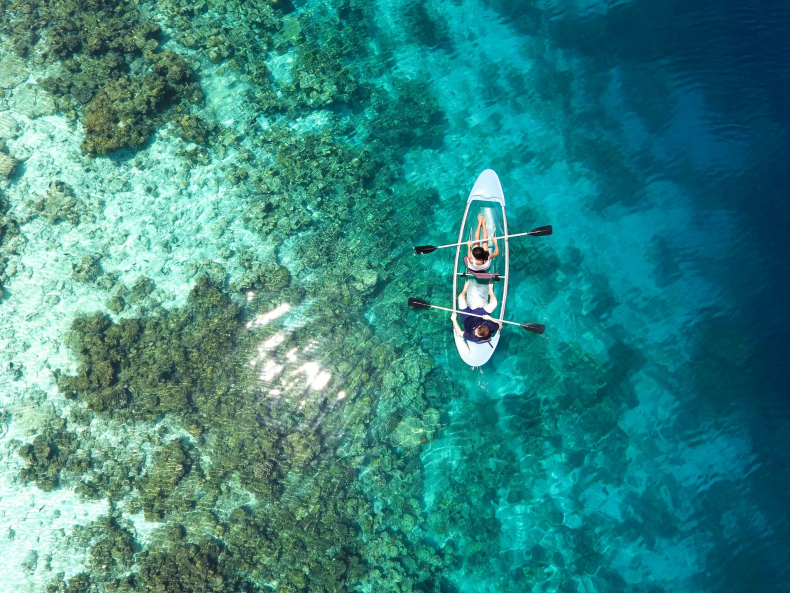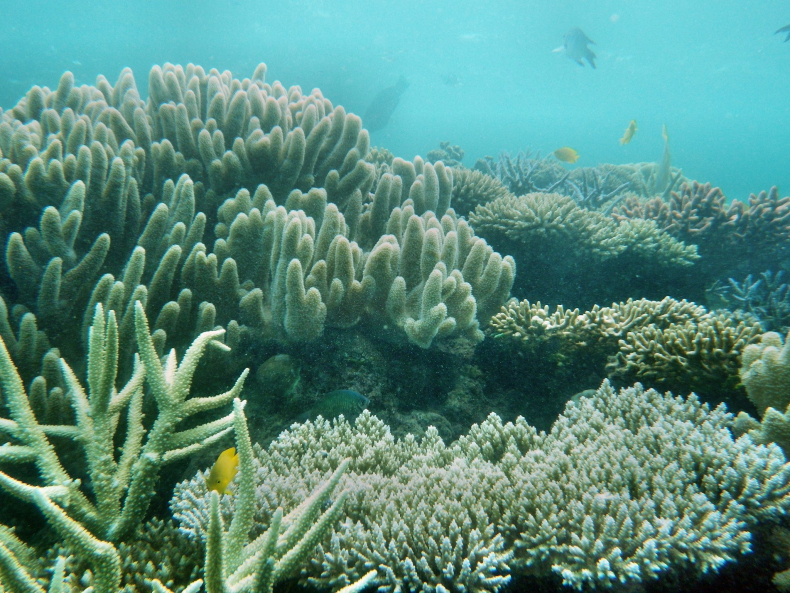This story was originally published by The Guardian and appears here as part of the Climate Table collaboration.
A Nobel Prize-winning economic theory used by investors is showing early signs of helping save threatened coral reefs, scientists say.
Researchers from the University of Queensland in Australia used modern portfolio theory (MPT), a mathematical framework developed by economist Harry Markowitz in the 1950s to help risk-averse investors maximize returns, identify the 50 reefs or coral sanctuaries around the world that are most likely to survive to the climate crisis and to be able to repopulate other reefs, if there are no other threats.
the study recommends targeting investment in conservation projects that have the “greatest potential for success” in protecting priority reefs. The benefits go beyond positive ecological outcomes and include crucial social, economic, health and nutritional benefits for communities, according to partners, organizations and funders interviewed by Blue Earth Consultants.
Professor Ove Hoegh-Guldberg, a University of Queensland climate scientist who helped lead the “50 Reefs” project, said: “It is essentially a strategy to help us make decisions about what to protect, if we want to have corals in the end. century.
“This is our best chance to have a long-term future for coral reefs,” he said.
Coral reefs face a dire future. Even if drastic cuts in emissions ensured that global warming was limited to 1.5 C above pre-industrial levels, which would require cutting global CO by almost half2 emissions by 2030 from 2010 levels – 70% to 90% of today’s corals would disappear.
What people are reading

In October, a study of Coral reef health has been found to have been lost 14% globally in less than a decade, with bleaching events caused by rising sea surface temperatures being the biggest culprit.

“Modern portfolio theory is a framework that aims to reduce risk and maximize returns,” said Hoegh-Guldberg. “He is treating conservation as an investment opportunity.”
Coral reefs face a dire future. Even if drastic emission reductions ensured that global warming was limited to 1.5 C above pre-industrial levels, 70 to 90 percent of today’s corals would disappear. #Ocean #Climate crisis #CoralReefs
The strategy, which emerged from a meeting of scientists at the Hawaii Institute of Marine Biology In 2017, he leveraged the theory to help scientists choose a “balanced” portfolio of coral reefs.
“There are hundreds of these reefs all over the planet,” Hoegh-Guldberg said. “Which one do you choose to focus your efforts on?”
Dr Hawthorne Beyer, a fellow at the University of Queensland who researches the use of quantitative modeling in environmental systems management, said: “Talk to people in the business world and they will understand immediately. It’s a very logical idea and it makes a lot of sense. Ours was the first to apply it on a global scale. “
Scientists divided the world’s coral reefs into “bioclimatic units” (BCU) of 500 square kilometers. They used 174 metrics, in five categories, including temperature history and projections, ocean acidification, invasive species, cyclonic activity, and connectivity to other reefs, for each. Then, using a process called “scalarization,” they produced estimates for each BCU. This captured the widest range of possibilities for the future. “We don’t know which metrics are the best to predict risk,” Beyer explained.
The team then used MPT to quantify threats and identify reefs that offer the best options for conservation, while allowing for uncertainty about future risks from climate change.
“You don’t want to put all your eggs in one basket, or bet on one measure of risk, when we have great uncertainty about what the risks will be,” he said.
The project identified reefs in the Middle East, North and East Africa, Australia, the Caribbean, the Pacific Islands, South America, Southeast Asia, and South Asia. They include parts of the Great Barrier Reef in Australia, Egypt, and the southern Red Sea, and parts of the “coral triangle” around Indonesia, Malaysia, Papua New Guinea, and the Philippines. But, based on the criteria of climate and connectivity, the model excluded several ecologically significant areas, such as Hawaii and the Barrier Reef of Central America.

Nearly $ 93 million has been invested in the project, funded by Vibrant of Bloomberg Philanthropies Oceans initiative and others. The report found that the 50 reef-inspired approach had helped at least 26 organizations, and eight funders have now prioritized 60 coral reef ecosystems in more than 40 countries.
Coral reefs cover only 0.2 percent of the ocean floor, but they are home to at least a quarter of all marine species and support hundreds of millions of people. Conservation Efforts inspired by the study have focused on five threats to corals: fishing; “Non-point source pollution”, such as fertilizers, road runoff, or sediment; wastewater pollution; coastal development; and stress to reefs due to climatic extremes.
Emily Darling, Director of coral reef conservation at the Wildlife Conservation Society (WCS)He said that part of the benefit was having a clear plan of where to best focus his efforts.
“One of the biggest benefits of the 50 reef approach has been this compelling message that climate change is the critical threat to coral reefs and this is an approach that can give reefs a fighting chance.”
WCS has $ 18 million in funding to work in 11 countries, including Fiji, Indonesia, Kenya, and Tanzania, on 21 of the 50 reefs, to help communities reduce pressure on precious ecosystems.
“We are analyzing non-climatic threats such as overexploitation, destructive fishing, unsustainable tourism, coastal development, water pollution. Then we ask, ‘Well, what are the main local pressures?’ “Said Darling. “And that’s how we identify which intervention to adapt to those different situations.”
WSC has supported an exclusionary marine protected area between Kenya and Tanzania, where no fishing, mining, drilling or similar activities are allowed, to protect corals from these other pressures that run alongside global warming.
“By doing that, we will not only safeguard the biodiversity of the coral reefs, but also the whales, the spinner dolphins, the dugong, the coelacanth, that whole ecosystem,” he said.
One of the 50 reefs identified is the “happy coral” sanctuary discovered in Tanzania, reported by The Guardian last year where coral species have thrived despite warming events they have killed neighboring reefs.
Reference-www.nationalobserver.com